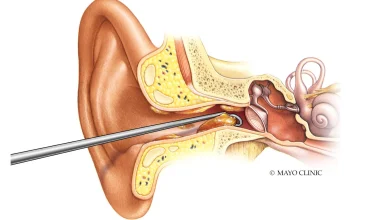Here is what women should know about breast cancer

Breast Cancer is the most prevalent invasive cancer in women and the primary cause of cancer fatalities. Although it can also happen to men, women are significantly more likely to develop breast cancer. Understanding the indicators, types, and prevention techniques will help you prioritize your health, whether you are approaching your first yearly screening or have a family history. This Breast Cancer Awareness Month, here is what you need to know.
What are the symptoms of breast cancer?
Knowing the breast cancer warning symptoms will help you decide when it’s time to contact your doctor.
Breast cancer symptoms include:
- A painless lump or mass in (or near) the breast
- A change in breast size or firmness
- Breast skin changes, such as dimpling, a sore, or a rash
- Nipple itching, burning, inflammation, turning inward, or discharge
- A warm area in the breast
- Pain in the breast
- Swelling under the armpit or of the arm
If you experience any of these signs, you should consult a doctor, but you should know that most breast lumps are not cancerous.
Table of Contents
What causes breast cancer?
Breast cancer arises when abnormal breast cells divide and grow. It is unclear what are the exact causes of breast cancer. However, research indicates that several risk factors may increase your chances of developing breast cancer. These include:
- Age
- Family history and genetics
- Smoking & Alcohol use
- Obesity
- Radiation exposure
- Hormone replacement therapy
How is breast cancer diagnosed?
Your doctor will check your breasts and enquire about your family history, medical background, and current symptoms. Additionally, your doctor will advise testing to look for abnormalities in your breasts. These tests could consist of the following:
Mammogram. These exceptional X-ray images can detect changes or abnormal growths in your breast.
Ultrasonography. This test uses sound waves to take pictures of the tissues inside your breast. It’s used to help diagnose breast lumps or abnormalities.
Positron emission tomography (PET) scanning: A PET scan uses special dyes to highlight suspicious areas. During this test, your doctor injects a special dye into your veins and takes images with the scanner.
What are the stages of breast cancer?
The staging process explains the extent of cancer in your body. The size, location, tumor area, and whether the disease has spread to other parts of your body all play a role in this decision. The primary stages of breast cancer are:
- Stage 0– The disease is non-invasive, meaning it hasn’t broken out of your breast ducts.
- Stage I – The cancer cells have spread to the nearby breast tissue.
- Stage II – At this stage, tumors may or may not affect the adjacent lymph nodes and range in size from 2 to 5 cm.
- Stage III– At this stage, cancer has spread beyond the point of origin. It may have invaded nearby tissue and lymph nodes but hasn’t spread to distant organs.
- Stage IV – At this time, cancer has spread past its original site. Although it may have spread to adjacent lymph nodes and tissue, it hasn’t reached distant areas.
What are the treatments available for breast cancer?
There are several breast cancer treatment options available and these include:
- Radiation therapy
- Surgery
- Biological therapy, or targeted drug therapy
- Hormone therapy
- Chemotherapy
The best course of action for you will depend on several variables, including the size and location of the tumor, the findings of your lab tests, and if the cancer has spread to other parts of your body. It is not unusual to receive multiple combinations of treatments at once.
How can you prevent breast cancer?
Over a lifetime, various variables can affect your chance of developing breast cancer. Even though some things, including growing older or having a family history, are beyond your control, you may help reduce your risk of breast cancer by maintaining your health with the approaches described below.
- Achieving and maintaining healthy body weight.
- Staying physically active
- Limiting alcohol consumption.
- Having a healthy diet with plenty of fresh fruits and vegetables
- Limiting postmenopausal hormone therapy.
Preventive surgery is also a choice for those at a high risk of developing breast cancer.
See here for more information




